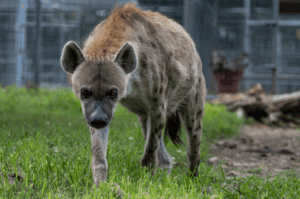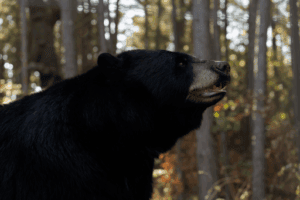It’s no secret that we all have to eat. As large predators ourselves, adult humans need approximately 2000 calories a day to sustain ourselves. Humans, however, have the luxury of perusing a grocery store, convenience shop, or farmers market for our meals. Even if you are a hunter and you rely on nature’s bounty for food, it is likely that you also rely on a weapon to help you in your endeavors. But what about large predators that only have their bodies to help them? How do they do it? These animals find their food depending on their natural-born abilities and learned skill sets. A meat-eating predator’s hunting type categorizes them into one of three predator camps: ambush, pursuit, or scavenger.
Ambush Predators
Animals in the ambush predator camp rely on stealth and speed to hunt their meals. They are also called “sit-and-wait” predators. Ambush predators will often stay motionless for long periods of time waiting for a prey animal to come within their reach before striking. For this to be successful, the prey animal cannot be aware of the immediate danger. As you can imagine, staying hidden may be difficult for a large predator.
For example, tigers are some of the largest terrestrial ambush predators in the animal kingdom, some males weighing upwards of 500lbs. Their orange and black striped coat, however, makes them nearly invisible to their colorblind prey. In anticipation of a pounce, the tiger will make themselves as small as possible, tucking their feet under themselves and laying their ears flat against their heads. Fur-cushioned paw pads make them nearly soundless as they make calculated micro-adjustments in the brush. When the time is right, the tiger uses their long, muscular hind legs to leap forward up to 25 feet horizontally. Striking the base of the neck, the tiger’s immaculate bite force (1000-1200 psi) secures the prey as a meal that will feed the tiger for days to come.

Pursuit Predators
As the name suggests, pursuit predators pursue their prey. These animals often chase their prey for extended amounts of time until they catch them, or the prey animal becomes so exhausted that it collapses. Solitary pursuit predators will often stalk their prey; getting as close as possible before giving chase. This chase expends most of the predator’s metabolic resources in one burst.
Some animals, like Spotted Hyenas, have learned that hunting in groups allows them to pace themselves a bit longer. By using group coordination, a pack of spotted hyenas can easily separate a small or weak buffalo from a herd. A large group of hyenas can just as easily take down a healthy adult. Their long forelegs allow them to sustain a 37 mph run for long distances, and their complex vocalizations further aid them in communicating with the pack during a pursuit.

Scavengers
Meat-eating animals in the scavenger category hunt for easy protein in the form of carrion – already deceased animals. Black bears are expert scavengers. Although they can hunt for a fresh kill, black bears prefer to take a different approach to find protein. They use their keen sense of smell to detect food smells in the environment. Their sense of smell is over two thousand times more sensitive than humans, meaning they can detect scents from miles and miles away.
Carrion only makes up between ten and thirty percent of a black bear’s diet depending on the season. Thus, black bears can afford to be selective about their meals. They prefer freshly deceased prey, and have been known to skip out on a carcass that has been gone for too long. This, along with their extremely acidic stomach acids, keep them from picking up any diseases from their meals.

Sources
https://www.largecarnivores.fi/species/brown-bear/bears-diet-and-hunting-behaviour.html
https://www.nps.gov/articles/000/american-black-bear.htm
https://animals.sandiegozoo.org/animals/spotted-hyena
https://education.turpentinecreek.org/species-information/spotted-hyena/
https://www.nps.gov/yose/blogs/bear-series-part-one-a-bears-sense-of-smell.htm
*Published by Mack Polk on 10/04/2025*